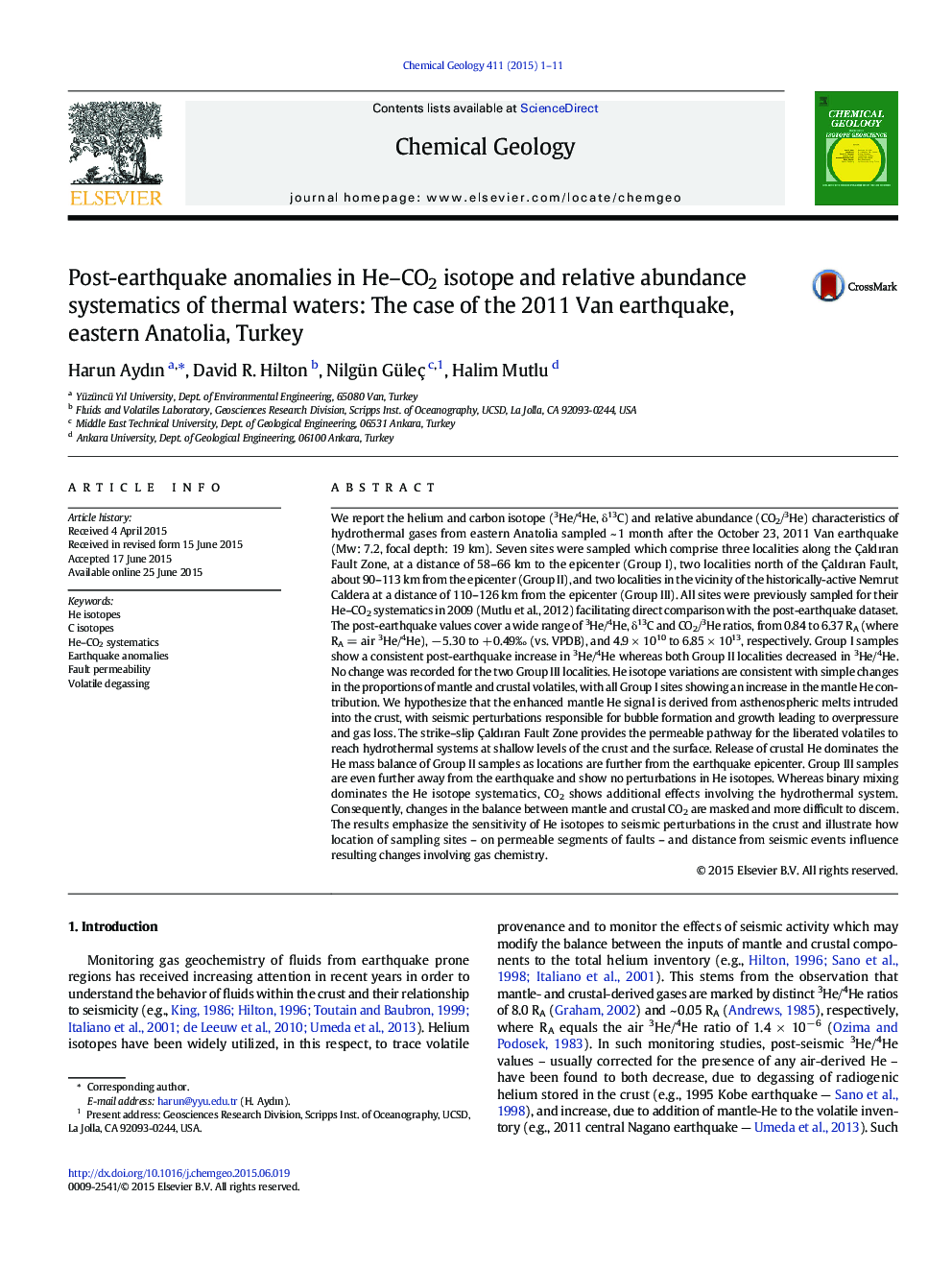| کد مقاله | کد نشریه | سال انتشار | مقاله انگلیسی | نسخه تمام متن |
|---|---|---|---|---|
| 6436307 | 1637563 | 2015 | 11 صفحه PDF | دانلود رایگان |

- Changes in He-CO2 systematics were examined for 2011 Van earthquake, Turkey.
- Increases in RC/RA ratios were recorded around the strike-slip Ãaldıran Fault Zone.
- Significant anomalies in RC/RA were observed at a distance of <Â 110Â km from the epicenter.
- Ãaldıran Fault provides an accessible pathway for volatile transfer to the crust.
We report the helium and carbon isotope (3He/4He, δ13C) and relative abundance (CO2/3He) characteristics of hydrothermal gases from eastern Anatolia sampled ~ 1 month after the October 23, 2011 Van earthquake (Mw: 7.2, focal depth: 19 km). Seven sites were sampled which comprise three localities along the Ãaldıran Fault Zone, at a distance of 58-66 km to the epicenter (Group I), two localities north of the Ãaldıran Fault, about 90-113 km from the epicenter (Group II), and two localities in the vicinity of the historically-active Nemrut Caldera at a distance of 110-126 km from the epicenter (Group III). All sites were previously sampled for their He-CO2 systematics in 2009 (Mutlu et al., 2012) facilitating direct comparison with the post-earthquake dataset.The post-earthquake values cover a wide range of 3He/4He, δ13C and CO2/3He ratios, from 0.84 to 6.37 RA (where RA = air 3He/4He), â 5.30 to + 0.49â° (vs. VPDB), and 4.9 Ã 1010 to 6.85 Ã 1013, respectively. Group I samples show a consistent post-earthquake increase in 3He/4He whereas both Group II localities decreased in 3He/4He. No change was recorded for the two Group III localities. He isotope variations are consistent with simple changes in the proportions of mantle and crustal volatiles, with all Group I sites showing an increase in the mantle He contribution. We hypothesize that the enhanced mantle He signal is derived from asthenospheric melts intruded into the crust, with seismic perturbations responsible for bubble formation and growth leading to overpressure and gas loss. The strike-slip Ãaldıran Fault Zone provides the permeable pathway for the liberated volatiles to reach hydrothermal systems at shallow levels of the crust and the surface. Release of crustal He dominates the He mass balance of Group II samples as locations are further from the earthquake epicenter. Group III samples are even further away from the earthquake and show no perturbations in He isotopes. Whereas binary mixing dominates the He isotope systematics, CO2 shows additional effects involving the hydrothermal system. Consequently, changes in the balance between mantle and crustal CO2 are masked and more difficult to discern. The results emphasize the sensitivity of He isotopes to seismic perturbations in the crust and illustrate how location of sampling sites - on permeable segments of faults - and distance from seismic events influence resulting changes involving gas chemistry.
Journal: Chemical Geology - Volume 411, 14 September 2015, Pages 1-11